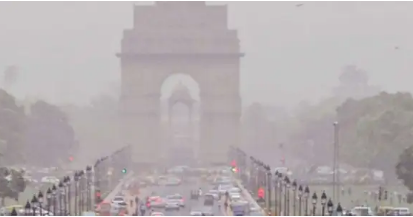On Thursday, many districts of Delhi recorded’severe’ air quality, with a persistent hazy haze blanketing the city for the third day in a row.
Scientists have warned of a jump in pollution levels in the Delhi-NCR region over the next two weeks due to an increase in farm fires and unfavorable weather conditions. This is problematic because the air quality index has already above 400 in numerous regions.
According to medical authorities, it may worsen asthma and lung difficulties in youngsters and the elderly.
Several city neighborhoods, including Punjabi Bagh (416), Bawana (401), Mundka (420), and Anand Vihar (413), had bad air quality.
An AQI of zero to fifty is regarded good, 51 to one hundred satisfactory, 101 to two hundred moderate, 201 to 300 poor, 301 to 400 very poor, and 401 to 500 severe.
During the winter, unfavorable weather circumstances, a cocktail of emissions from firecrackers and paddy straw burning, as well as local sources of pollution, push Delhi-NCR air quality to dangerous levels.
According to a study done by the Delhi Pollution Control Committee (DPCC), the capital has suffered from.







